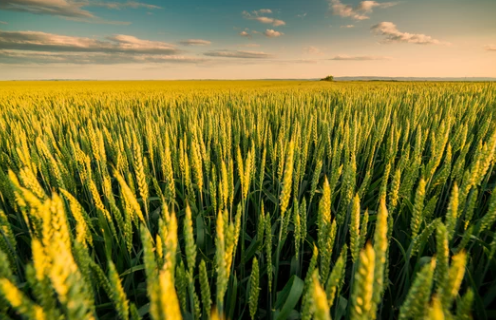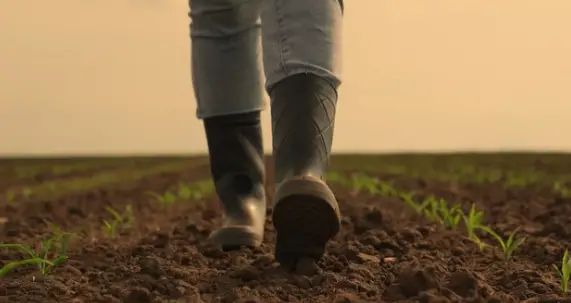The basis for effective crop production is laid by the germination of wheat, a critical agricultural process.
In order to give wheat seeds the best chance of germination, they are typically planted underground. A fascinating topic, nevertheless, is whether wheat can germinate above ground.
In this blog article, we’ll dig deeper into this question by looking at the variables that affect wheat germination and considering the possible effects of surface germination.

Will Wheat Germinate on Top of the Ground
Wheat Germination
Germination is the process through which a seed transforms into a young plant. Wheat germination typically requires three essential elements: water, oxygen, and an appropriate temperature range. These factors facilitate the activation of enzymes within the seed, leading to the emergence of a new plant. Underground planting has long been the preferred method for ensuring these conditions are met.
Factors Affecting Wheat Germination
While wheat seeds are traditionally sown underground, the possibility of surface germination raises concerns about various external factors. Surface-sown seeds are exposed to temperature fluctuations, limited water availability, sunlight exposure, and increased vulnerability to pests and diseases. These challenges make successful germination on top of the ground less likely than in the controlled environment of the soil.
Natural Occurrences
In nature, wheat seeds can occasionally find themselves on the surface through accidental means. Wind can blow seeds from neighboring plants, birds may disperse seeds through their droppings, or crop residues left on the ground might contain viable seeds. In such cases, the outcome of surface-sown wheat seeds can vary. While some may fail to germinate due to unfavorable conditions, others might have a chance of survival and development.
Experimental Attempts
Scientific experiments and observations have been conducted to investigate the possibility of wheat germination on top of the ground. These studies have provided valuable insights into the challenges faced and success rates achieved. Researchers have explored techniques such as protective coverings, advanced irrigation systems, and genetic modifications to improve surface germination. However, it’s important to note that underground planting remains the most reliable method for wheat germination.
Potential Advantages and Disadvantages
Surface germination offers potential advantages, such as faster emergence due to direct exposure to sunlight and reduced labor in certain scenarios. However, it also brings disadvantages. Surface-sown seeds are more susceptible to pests, diseases, and adverse weather conditions. Additionally, they may lack the necessary access to moisture and nutrients present in the soil, hindering their growth potential.

Innovative Techniques to Encourage Surface Germination
- Protective Coverings: To mitigate the challenges of surface germination, protective coverings can be employed:
- Mulching materials: The use of organic or synthetic mulches such as straw, wood chips, or plastic can create a microclimate that retains moisture, moderates temperature, and protects the seeds from direct sunlight.
- Biodegradable films: Biodegradable films made from materials like cellulose or starch can be laid on the surface to provide a protective barrier, conserve moisture, and create an optimal environment for seed germination.
- Advanced Irrigation Systems: Water management is crucial for successful surface germination:
- Drip irrigation: Drip irrigation systems can deliver water directly to the surface-sown seeds, ensuring adequate moisture without wastage. This targeted approach improves water efficiency and enhances germination rates.
- Hydroponics: Hydroponic systems, adapted for surface germination, allow for precise control of nutrient delivery. The seeds are placed in a nutrient-rich solution, providing them with the necessary elements for growth.
- Genetic Modifications: Advancements in genetic engineering can enhance the potential for surface germination:
- Seed resilience: Researchers are exploring genetic modifications aimed at enhancing the tolerance of wheat seeds to external stressors. These modifications can improve seed viability and increase the chances of successful surface germination.
Conclusion
While wheat germination is primarily optimized through traditional underground planting, surface germination does occur in specific circumstances. However, the success rate and viability of surface-sown wheat seeds depend on numerous factors, making them less predictable and more susceptible to external influences. Continued research and experimentation are necessary to better understand the potential and limitations of surface germination in wheat cultivation. By gaining further insights and utilizing innovative techniques such as protective coverings, advanced irrigation systems, and genetic modifications, we can harness the benefits and address the challenges of surface germination, potentially enhancing crop production methods in the future.




